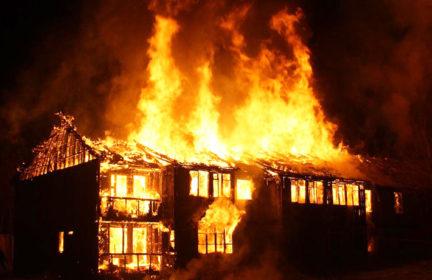How to survive bad air and heat from summer wildfires
I’ve started a couple of threads on related topics in the last year, but I thought I’d bring it all together in a larger discussion. I live in Northern California where our primary disaster scenario has been with wildfires, which are getting quite extreme now. For the past several years every summer and/or fall large areas of the state have had to deal with terrible air when we are told to keep our windows and doors closed and avoid going outside if possible. Usually, during this time it’s also hot and sometime, in some neighborhoods, our power company turns off the electricity to prevent further fires from igniting because of downed power lines.
I’ve haven’t had my electricity turned off yet, but I still dread these days or weeks of lockdown with closed windows and heat. I don’t tolerate heat well and I always have to have a draft. Last summer I just couldn’t stand it and started opening doors and windows anyway, even though the air was in the red zone. Now I’m trying to prepare for next summer. Wondering what folks in similar circumstances are doing to prep. Here’s what I’ve done.
– I’ve gotten three air purifiers for my house. I have to admit sometimes I run them when the window or door is open, which is counterproductive, but better than nothing, I guess.
-I have two OPOLAR little fans I bought on Amazon. I love these fans. They are handheld and very versatile. About $13 each. They’re good for travel and all sorts of other activities and they don’t draw a lot of power. I don’t know if they’ll really be enough to keep me cool though in a heatwave scenario with closed windows, especially.
-I bought a MERV 13 filter, which I plan to put in one of my windows and combine with a fan, to suck in filtered air even when the air is bad. It’s a little bit of a DIY project because I need to figure out how to cover the rest of the open window with cardboard and tape so unfiltered air doesn’t leak. The amount of air that enters that way is very low though. Probably enough to replace the oxygen but not enough to feel a breeze. I also don’t know if I should have another window where the air is being pumped out to keep it circulating.
-
Best Replies
-
Comments (11)
-

